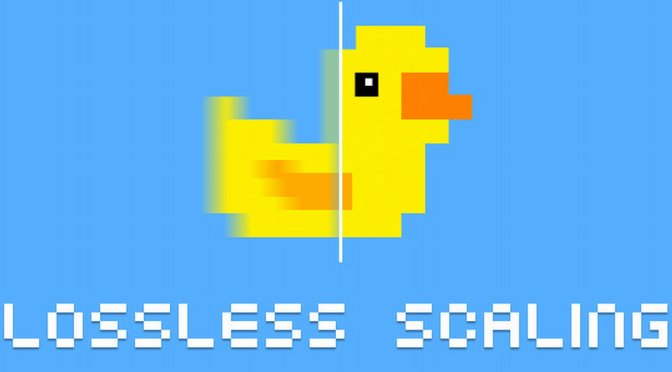Last week, we informed you about a new version of Lossless Scaling that allows you to enable Frame Generation in all PC games on all GPUs. And, thankfully, its creator has provided us with a code for it. As such, we’ve decided to test it in a variety of games and share our thoughts.
Now as we’ve already said, Lossless Scaling Frame Generation has some limitations. The program needs a game to be locked at half of your monitor’s refresh rate. So, if you have a 120hz monitor, you’ll have to lock games at 60fps. Anything other than that and you’ll get frame pacing issues. Thankfully, you can easily do this via NVIDIA’s control panel. And, no. LSFG is not compatible with VRR monitors.
In fact, owners of G-Sync/FreeSync monitors will have to completely disable G-Sync from their Control Panel. With G-Sync enabled on our LG CX and LG 32GK850G-B, we had major frame pacing issues. That was even when we set the refresh rate at 120Hz and locked a game’s framerate at 60fps. The only way we could resolve this was by switching our TV and PC monitor to “Fixed Refresh Rate.” Once we did this, Lossless Scaling Frame Generation worked the way it was supposed to. So, if you own a G-Sync monitor, you’ll have to set it to “Fixed Refresh Rate.”
Another thing worth noting is how BAD 60fps looks on a non-VRR monitor. With G-Sync enabled, 60fps felt smooth on both our LG CX and LG 32GK850G-B. Even when panning the camera in Elden Ring or Cities Skylines 2, 60fps felt great. However, when we set them to “Fixed Refresh Rate”, 60fps wasn’t that smooth. While close objects were moving smoothly, distant objects felt a bit judder-y.
We’ve tested Lossless Scaling Frame Generation in six games. These were Elden Ring, Kingdom Come: Deliverance, The Medium, Assetto Corsa Competizione, Cities Skylines 2 and Chernobylite. For our tests, we used an AMD Ryzen 9 7950X3D, 32GB of DDR5 at 6000Mhz, and NVIDIA’s GeForce RTX 4090. We also ran the latest version of Windows 10 64-bit and used the GeForce 546.33 driver.
At 2560×1440, our NVIDIA RTX 4090 was able to maintain 60fps in pretty much all of the tested games. This was crucial as lower framerates can introduce major frame pacing issues. However, even with a constant 60fps, there were some minor judders in quick mouse movements. That could be easily noticed in Elden Ring, Kingdom Come: Deliverance and Cities Skylines 2. Similarly, in Elden Ring with its Ray Tracing effects, we had numerous frame-pacing issues when exploring the game’s environments.
We also experienced MAJOR ghosting issues in all of the games we tested. Some games, like Elden Ring, felt completely broken. Not only that but I’ve noticed major latency input issues in some titles. For instance, I could easily notice the extra input latency in Assetto Corsa Competizione. Assetto Corsa Competizione also had numerous ghosting issues, so it was completely unplayable for me. In this game, I’d gladly take 60fps over LSFG on any given day.
The games that heavily benefited from LSFG were The Medium, Kingdom Come: Deliverance, and Cities Skylines 2. The Medium has fixed camera angles and was one of the games in which LSFG worked incredibly well. And while Kingdom Come: Deliverance and Cities Skylines 2 had some framerate judders, they felt way smoother than the default 60fps. However, that’s on a non-VRR monitor. On a VRR monitor, all of the games felt smooth at 60fps, without having any of the issues of LSFG.
Here’s a summary of our experience per game.
- Cities Skylines 2: Laggy, overlay/icon ghosting issues, smoother gameplay
- Elden Ring: Ghosting issues, frame-pacing/judder issues, slightly laggy mouse movement
- Chernobylite: Minor ghosting issues, smoother gameplay, minor judders
- Kingdom Come Deliverance: Ghosting issues, smoother gameplay, minor judders
- The Medium: Best example, LSFG works great here
- Assetto Corsa Competizione: Really laggy, ghosting issues, frame-pacing issues, game didn’t feel well
Now while LSFG was a bit disappointing in most modern-day PC games, it can make a big difference in older titles that are locked at 30fps. Or you can use LSFG to boost the performance of console-emulated games that run at 30fps. So, if you’re an emulator enthusiast, LSFG will be a godsend.
For everyone else, LSFG is a mixed bag. Yes, LSFG can improve your gaming experience if you are still gaming on a non-VRR monitor and if your GPU can maintain 60fps in games. In this particular case, Lossless Scaling Frame Generation will improve the smoothness of games. However, if you have a G-Sync monitor, LSFG is a big NO-NO. And no, LSFG is nowhere close to matching the quality of DLSS 3. DLSS 3 Frame Generation doesn’t have as many ghosting or input latency issues as LSFG has. Plus, DLSS 3 works wonderfully with VRR. Also, you can use DLSS 3 FG to get better performance, something that is impossible with LSFG (as even minor drops below 60fps can introduce frame-pacing/judder issues).
LSFG is a free mod so I have to give kudos to THS for it. Don’t get me wrong, I’m not criticizing his work. For an individual, this is an incredible achievement. However, I was expecting more from LSFG.
John is the founder and Editor in Chief at DSOGaming. He is a PC gaming fan and highly supports the modding and indie communities. Before creating DSOGaming, John worked on numerous gaming websites. While he is a die-hard PC gamer, his gaming roots can be found on consoles. John loved – and still does – the 16-bit consoles, and considers SNES to be one of the best consoles. Still, the PC platform won him over consoles. That was mainly due to 3DFX and its iconic dedicated 3D accelerator graphics card, Voodoo 2. John has also written a higher degree thesis on the “The Evolution of PC graphics cards.”
Contact: Email

